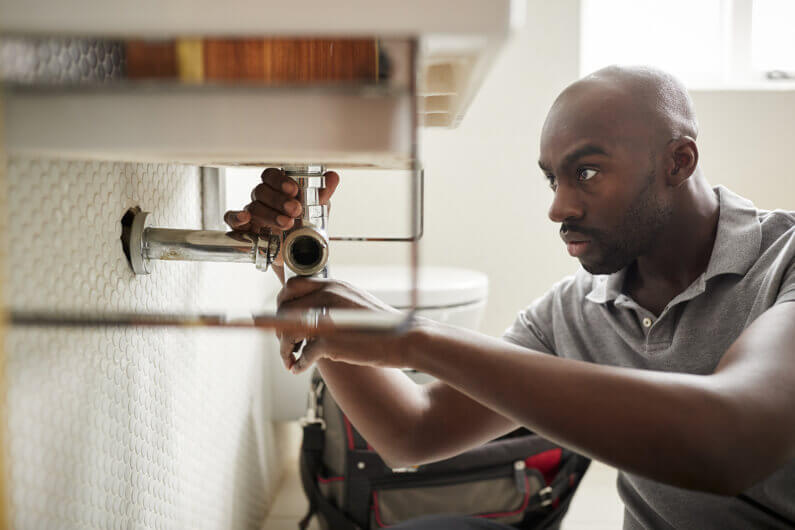Premier Plumber Alabaster AL Ready to Serve You Anytime
Wiki Article
A Step-by-Step Overview to Efficient Water Heater Installation for Optimum Performance
Beginning on the task of installing a water heating system is a venture that demands precision and a methodical approach for attaining optimal efficiency. As you proceed, the ins and outs of attaching water supply lines and setting up reliable electrical or gas connections wait for, promising insights into ensuring performance and integrity.Selecting the Right Water Heating System

Next, think about the size and ability of the water heating unit. It's crucial to analyze your household's warm water requirements, which can differ based on the variety of residents and their use patterns. An unit that's too little might bring about not enough hot water, while a large model could cause unneeded energy intake.
Efficiency ratings additionally play a pivotal role in selection. Seek water heaters with high Energy Variable (EF) rankings, indicating remarkable performance and reduced energy usage. Tankless versions, though normally extra expensive ahead of time, offer significant power savings gradually because of their on-demand home heating capabilities.
Preparing the Installation Location
Before setting up a new water heater, careful preparation of the installment location is crucial. It's critical to measure the area meticulously to fit the water heater's measurements, guaranteeing adequate clearance around the system for reliable procedure and maintenance.Check the flooring for security, as the water heater will certainly need a strong, degree surface area to run properly. If needed, set up a drip frying pan below the unit to capture possible leaks or spills, avoiding water damage to the surrounding area.
In addition, make certain that all essential devices and products get on hand prior to starting the installment. This includes things such as wrenches, screwdrivers, a degree, and any kind of added equipment required for protecting the heater and installing. A well-prepared installation location sets the foundation for an effective hot water heater configuration, optimizing performance and safety and security.
Connecting Water Lines
When linking water supply lines to your freshly set up hot water heater, it is important to make sure that all connections are leak-free and secure to preserve reliable procedure and protect against water damages. Begin by determining the warm and chilly water system lines. The cool water inlet is usually marked with a blue label or a "C", while the hot water outlet is noted with a red label or an "H".Use versatile water heating system adapters to help with a less complicated installment process. Prior to attaching the ports, place a plumber's tape around the threaded ends of the water heating unit's inlet and electrical outlet pipes.
As soon as links remain in area, slowly switch on the major water system shutoff. Examine each connection for leaks by visually feeling and checking for moisture. Tighten links as required, and make certain the stress safety valve is appropriately installed, securing versus too much pressure accumulation.
Establishing Electric or Gas Connections
Appropriately setting up the electric try this website or gas links for your water heating unit is an essential step to guarantee effective and secure procedure. For electric water heating units, begin by validating that the electric circuit is compatible with the heating unit's voltage and amperage needs.For gas water heaters, safety is vital. Verify that the gas supply is off prior to proceeding. Link the gas line to the hot water heater making use of a flexible gas connector, ensuring it is correctly threaded and secured with pipeline joint compound see this here or Teflon tape ideal for gas connections. Tighten the connections with a wrench, making sure not to over-tighten (Drain Cleaning Alabaster AL).
Once connections are made, evaluate for any potential leaks. For gas lines, apply a soapy water remedy to the joints; bubbles indicate a leak. For electrical links, double-check that all wiring is safe and effectively shielded, keeping conformity with regional electrical codes.
Testing and Adjusting for Performance
With the electric and gas links safely in position, the next action is evaluating the operational performance of your hot water heater. Begin by meticulously turning on the water system and guaranteeing there are no leaks at any one of the joints or valves. Once confirmed, continue to load the container, paying focus to the pressure and temperature level settings. It is suggested to establish the thermostat to a suggested temperature of around 120 ° F(49 ° C) to stabilize energy performance and comfort.Next, carry out a complete assessment to guarantee the burner or burner are functioning correctly. For electric heating units, make use of a multimeter to validate if the components are drawing the appropriate current. In gas models, observe the heater flame; it must be blue and stable, showing effective burning.
Change the setups as necessary to get rid of inefficiencies. Take into consideration carrying out insulation measures, such as adding a water heating system covering, to better boost efficiency by decreasing heat loss. Additionally, check the anode pole's problem, as a tatty pole can reduce efficiency and cause storage tank rust.
Verdict
Effective water heating system installment is essential for guaranteeing ideal efficiency click this site and power savings. By picking the proper type and size, and meticulously preparing the installment location, a structure for success is established. Safely linking supply of water lines and carefully establishing electrical or gas links lessen possible issues. Thorough screening for leaks and precise thermostat adjustments to 120 ° F improve dependability and performance. Following these actions advertises long-term functionality and power conservation in domestic water heater.
Effectively setting up the electrical or gas connections for your water heating unit is an important action to guarantee effective and risk-free operation. For electric water heating systems, start by verifying that the electrical circuit is suitable with the heater's voltage and amperage requirements. Attach the gas line to the water heating unit using a versatile gas port, ensuring it is effectively threaded and secured with pipeline joint compound or Teflon tape appropriate for gas links.
Report this wiki page